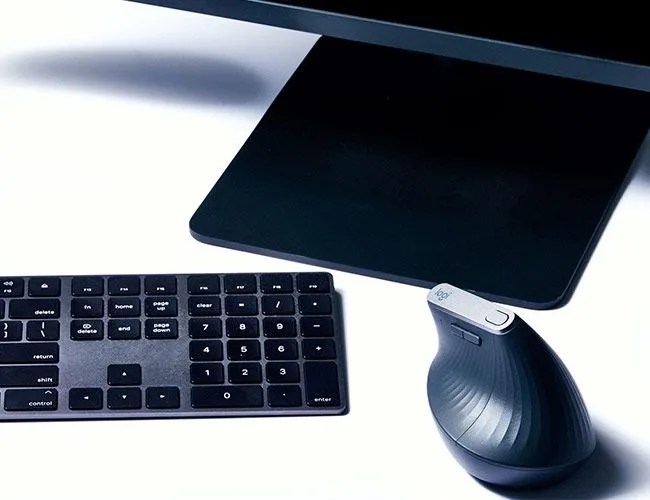Logitech released its first vertical mouse, the MX Vertical ($100), a few weeks ago. I’ll be honest: I never knew such a thing existed. So the thought of using one had never crossed my mind. A vertical mouse is basically a traditional “horizontal” mouse that’s been flipped on its side. It’s sort of like the flounder fish of the computer mice world. The whole point of them is to relieve stress and discomfort of the wrist so that people can work more comfortable and hopefully more efficiently.
Logitech says that 12 percent of daily computer users experience some level of this pronation – pressure or stress – of their wrist. Basically, your wrist’s natural resting position should have your thumb upwards – experts call this the “thumbs-up” position – but a horizontal mouse forces the opposite. Think of it like carpal tunnel. A vertical (or ergonomic) mouse is designed to position your hand upwards so that your wrist doesn’t roll over or pronate. It’s simple, really.
Vertical mice have been around for well over a decade (circa 2002) yet they’re still a pretty niche product category – I hadn’t even heard of them, and nobody in our office used one. Most people aren’t going to want need one – Logitech knows this, but that didn’t stop them from trying to design a damn good one. I’ve been using the MX Vertical for the better part of two weeks, switching over from Apple’s Magic Mouse, and I would’ve thought that the transition would be jarring. Well, it was a little bit for the first few hours. But I’ve got to say that it now feels natural, even a little cool, like I’m holding Beretta and playing a FOB shooter.

Being a Logitech mouse, the MX Vertical does come with some advanced features. After downloading the software – Mac and Windows compatible – you customize things like scroll speed and the accuracy of the cursor to your liking. That said, you don’t have to download the software to use the MX Vertical. This isn’t a gaming mouse like Logitech’ sister company, Logitech G, is known for and there’s aren’t any RGB lights on this thing. Instead, it’s a good yet pretty standard plug-and-play wireless mouse that charges via USB-C and has a four-month battery life. And at $100, it’s not ludicrously expensive.
Logitech determined that the natural handshake position – a 57-degree vertical angle – was the perfect angle for the MX Vertical mouse, as that’s the best angle for reducing wrist pronation. A whole bunch of other calculations and design decisions went into making this Ridley Scott movie-esque mouse. To find out more, including what the MX Vertical was designed to look like, we went to Nick Jinkinson, Logitech’s head of industrial design for creativity and productivity.
Q: What was your inspiration, design-wise, for the MX Vertical?
A: The shapes that we intuitively gravitated towards fused an architectural aesthetic with an organic one. This felt appropriate because it brought a level of purity and simplicity in shape, but also was clearly something that was enticing to touch. I’ve heard people liken the final shape to a sea-shell, a wave, but also a cooling tower. In practice, it was always driven by many, many rounds of sculpting and testing, with multiple shapes being exposed to a user panel for ergonomic testing and overall design feedback.

